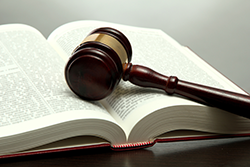
10 Jun 24
Eyewitness testimony holds a powerful position in criminal cases. The vivid recollection of a witness can often sway a jury more than forensic evidence. However, the reliability of such testimony is frequently questioned due to various psychological and situational factors that can impair memory. As a defendant facing criminal charges, understanding how eyewitness testimony can influence your case can equip you with better defense strategies. You also want to have a skilled criminal defense attorney by your side.
Eyewitness Testimony Effect On Criminal Cases
Eyewitness testimony significantly impacts criminal cases. Jurors often find it compelling because it seems straightforward. It involves someone who witnessed the event and is recounting their experience, evoking a strong emotional response and leading jurors to believe in its accuracy.
However, human memory is fallible. Research indicates that eyewitness testimony can be flawed and influenced by various factors, potentially leading to wrongful convictions. Approximately 70% of wrongful convictions overturned by DNA evidence in the United States each year are due to eyewitness misidentification.
These statistics show the potential for error; hence, the importance of scrutinizing eyewitness testimony in criminal cases.
Factors That Could Cause Eyewitness Mistakes
Eyewitness mistakes can result from psychological and situational factors, distorting memory and leading to inaccurate testimony, which can have serious consequences in criminal cases. Understanding these factors aids defendants in avoiding wrongful imprisonment and assists judges in making unbiased judgments.
Stress Or Anxiety
During a crime, high levels of stress or anxiety can impair a witness’s ability to accurately recall details. Stress prompts the release of cortisol, a hormone that affects cognitive functions, including memory. The “Yerkes-Dodson Law” indicates that moderate stress can enhance memory, but excessive stress can impair accurate recall.
According to credible studies, high-stress conditions significantly reduce the accuracy of eyewitness identifications and recall of event details. In simulated crime scenarios, participants under high stress were less likely to correctly identify a suspect compared to those under low stress.
The Presence Of A Dangerous Weapon
The presence of a dangerous weapon during a crime can significantly impair a witness’s ability to accurately recall and identify the perpetrator. This phenomenon is known as the “weapon focus effect.” When a weapon is present, witnesses tend to focus their attention on the weapon rather than on the perpetrator’s face, leading to less accurate descriptions and identifications.
A study on human behavior indicates that the presence of a weapon diminishes the precision of eyewitness descriptions and identifications. A meta-analysis of several studies revealed that witnesses exposed to a weapon were significantly less likely to identify the perpetrator correctly.
The weapon focus effect arises from the heightened perceived threat level associated with the presence of a weapon, which draws the witness’s attention to the most menacing aspect of the situation—the weapon. This narrowed focus distracts from other crucial details, like the perpetrator’s physical characteristics.
Their Level Of Confidence
Confidence in a witness’s testimony is often seen as indicating its accuracy. However, studies have shown that confidence doesn’t always correlate with accuracy. This misconception can lead jurors to give too much weight to confident testimony, possibly resulting in wrongful convictions.
Research into the relationship between eyewitness confidence and accuracy has found that post-identification feedback can greatly boost a witness’s confidence. Participants in the study who received confirming feedback about their identification, regardless of its accuracy, showed higher confidence in their memory, even when their identification was wrong.
Another study supporting these findings shows that witnesses who receive confirming feedback not only become more confident but also tend to remember the identification process as easier and their view of the perpetrator as clearer than it actually was.
In a comprehensive review, the National Academy of Sciences highlighted the potential dangers of using witness confidence as an indicator of accuracy. The review stressed that confidence can be influenced by various factors, such as the lineup’s nature, interactions with law enforcement, and post-event information, all of which can distort the witness’s memory and confidence.
Jurors often equate high confidence with high accuracy, a phenomenon known as the “confidence-accuracy relationship.” This can be misleading because even highly confident witnesses can be mistaken. Educating jurors about the weak correlation between confidence and accuracy is crucial to reducing the risk of wrongful convictions resulting from misidentifications.
Different Racial Identification
Eyewitnesses are generally less accurate when identifying individuals of a different race. This phenomenon, known as the “cross-race effect” or “own-race bias,” indicates that people are better at recognizing faces of their own race than those of other races. This bias can lead to higher rates of misidentification in cases involving cross-racial witnesses.
The cross-race effect has been extensively studied and confirmed by psychological research. A meta-analysis reviewed 39 studies on cross-racial identification and found a significant decrease in accuracy when witnesses identified individuals of a different race compared to their own. The studies showed that witnesses were 1.56 times more likely to make an incorrect identification when the suspect was of a different race .
The cross-race effect is influenced by social categorization processes. When participants were primed to think about race, their ability to recognize cross-racial faces decreased, suggesting that racial categorization itself can impair facial recognition accuracy.
The implications of the cross-race effect goes a long way in criminal justice. A review by the Innocence Project found that cross-racial misidentification has been a contributing factor in many wrongful convictions. For example, in cases where DNA evidence later exonerated the defendant, a significant proportion involved cross-racial identifications.
Courts and law enforcement agencies have recognized the impact of the cross-race effect and have taken steps to mitigate its influence. Some jurisdictions provide jurors with instructions about the potential for cross-racial identification errors. Additionally, experts on eyewitness identification may testify about the cross-race effect to educate jurors on its potential impact.
Choosing Under Pressure
The circumstances under which a witness is asked to identify a suspect can significantly impact the accuracy of their identification. High-pressure situations, such as lineups conducted with urgency or under coercion, can lead to mistaken identifications.
It has been found that suggestive lineup procedures, where the suspect stands out as the most likely perpetrator, can increase the likelihood of a witness choosing the suspect, even if they are innocent.
Moreover, lineup administrators’ behavior can influence witness decisions. When lineup administrators indicate their belief in the suspect’s guilt, witnesses are more likely to choose the suspect, regardless of their actual guilt. This can lead to false identifications and wrongful convictions.
In response to these concerns, some jurisdictions have implemented double-blind lineup procedures, where the lineup administrator does not know the identity of the suspect. This helps prevent unintentional cues that could influence the witness’s decision.
Influence Of Facts
Eyewitness memory can be influenced by post-event information, which can distort their recollection of the original event. This phenomenon, known as the “misinformation effect,” highlights the malleability of memory and its susceptibility to external influences.
Elizabeth Loftus, a renowned scientist, demonstrated the power of post-event information in shaping eyewitness memory. In her study, participants watched a video of a car accident and were then asked questions about the event. Participants who were asked, “How fast were the cars going when they smashed into each other?” reported higher estimates of speed compared to those asked, “How fast were the cars going when they hit each other?” This subtle change in wording influenced participants’ memory of the event, leading to inaccurate recollections.
Furthermore, her study showed that misinformation presented after the event can alter eyewitness testimony. Participants who were exposed to misleading information about a simulated robbery were more likely to incorporate that misinformation into their accounts, even when explicitly told it was false.
Psychological Transference
Psychological transference occurs when a witness subconsciously transfers feelings or memories associated with one person onto another. This can result in the witness mistakenly identifying an innocent person as the perpetrator because that person somehow reminds them of the actual offender or another significant individual in their life.
One of the landmark cases illustrating psychological transference is that of a memory expert who was mistakenly identified as a rapist. The victim had seen the memory expert on television shortly before the assault and, due to the stressful nature of the attack, her mind associated him with the crime. This case shows how transference can occur even when the witness has no intentional malice or deceit.
The phenomenon is supported by the concept of source monitoring errors. Source monitoring refers to the process of determining the origins of our memories, knowledge, or beliefs. An error occurs when a person attributes a memory to the wrong source. For example, a witness might correctly remember a face seen previously but incorrectly recall the context in which it was seen, leading to a wrongful identification.
In a study done by Cornell University, participants were shown a video of a staged robbery and later asked to identify the perpetrator from a lineup. Some participants mistakenly identified an innocent bystander who was present in the video but not involved in the crime, illustrating how familiarity with a face can lead to transference.
Psychological transference can have serious implications in criminal cases, as it can lead to the conviction of innocent individuals based on flawed eyewitness identification.
Multiple Culprits
When a crime involves multiple perpetrators, eyewitness identification becomes more complex and prone to errors. The presence of multiple culprits can overwhelm the cognitive processes of a witness, leading to confusion and inaccuracies in recalling specific details about each individual involved.
During a study to investigate the challenges associated with identifying multiple culprits, participants witnessed a simulated crime involving two perpetrators and were later asked to identify them from a lineup. The results showed a significant decrease in identification accuracy when multiple suspects were involved compared to crimes with a single perpetrator. Witnesses often conflated the actions and appearances of the culprits, leading to misidentifications.
In high-stress situations, cognitive overload occurs, reducing the clarity and accuracy of memory. Witnesses may remember the crime’s general aspects but struggle to distinguish the individual characteristics of each perpetrator.
The phenomenon known as “memory blending” can occur when multiple individuals are involved in a crime. Witnesses might inadvertently combine features from different culprits into a single composite image, which can lead to the misidentification of innocent individuals who share some characteristics with the actual perpetrators.
Eyewitnesses Interaction Levels With Various People
High levels of interaction and familiarity generally lead to more accurate identifications, while brief or superficial interactions can increase the likelihood of errors. Witnesses who have prior interaction with a suspect are more likely to make accurate identifications compared to those who have only seen the suspect briefly. Familiarity with the suspect allows witnesses to encode more detailed and distinctive features, enhancing their ability to recognize the suspect later.
Conversely, when a witness has limited interaction with the suspect, their memory of the perpetrator’s features may be less detailed and more prone to errors.
Additionally, the nature of the interaction can impact memory. Interactions involving emotional or stressful encounters are more likely to be remembered inaccurately due to the heightened stress interfering with cognitive processing. In contrast, neutral or positive interactions result in more accurate recollections.
Moreover, post-event interactions with other witnesses, law enforcement, or media can contaminate an eyewitness’s memory. This phenomenon, known as “memory conformity,” occurs when witnesses discuss the event with others and incorporate their recollections into their own memory.
The Effect of Eyewitness Testimony on Juries
Eyewitness testimony holds significant sway over juries, often being perceived as compelling and credible evidence. However, the persuasive power of eyewitness accounts can lead to problematic outcomes, especially when the testimony is inaccurate or flawed.
Jurors often prioritize eyewitness testimony, even when contradicted by other evidence, leading to potential biases in verdicts. They tend to believe confident witnesses, despite confidence not always aligning with accuracy. Moreover, Jurors often overlook the challenges of eyewitness memory, leading to an overreliance on testimony despite its potential flaws.
Expert testimony about eyewitness reliability helps jurors critically evaluate testimony, reducing wrongful convictions based on flawed accounts.
Also, legal reforms have been proposed to mitigate the impact of eyewitness testimony by providing instructions, standardizing procedures, and allowing expert witnesses to testify on reliability.
How Does The Law Protect You?
The legal system incorporates various safeguards to protect individuals from the potential inaccuracies of eyewitness testimony. These measures aim to minimize wrongful convictions by ensuring that eyewitness evidence is collected, presented, and evaluated with the utmost care and scientific rigor.
Standardized Lineup Procedures
Law enforcement agencies have adopted standardized procedures for conducting lineups to reduce the risk of misidentification. These procedures often include using double-blind lineups, where the officer conducting the lineup does not know the identity of the suspect, thus preventing any unintentional cues. Sequential lineups, where witnesses view one suspect at a time rather than all at once, are also recommended to reduce comparison-based identifications.
Sequential lineups significantly decrease false identifications compared to simultaneous lineups, helping witnesses focus on the suspect’s memory rather than making comparisons.
Jury Instructions on Eyewitness Testimony
Courts may provide jurors with specific instructions regarding the potential unreliability of eyewitness testimony. These instructions are designed to inform jurors about factors that can affect memory accuracy, such as stress, lighting conditions, and the presence of a weapon.
In California, the Judicial Council of California Criminal Jury Instructions (CALCRIM) includes instructions on evaluating eyewitness identification. CALCRIM No. 315 outlines various factors jurors should consider, such as the witness’s opportunity to observe the perpetrator, the accuracy of the witness’s prior description, and any discrepancies between the witness’s testimony and other evidence presented at trial.
Expert Testimony
Expert witnesses can be called to educate the jury about the science of memory and the factors that affect the reliability of eyewitness testimony. These experts can explain complex psychological concepts in a way that jurors can understand, helping them make more informed decisions.
Expert testimony markedly enhances jurors’ comprehension of the constraints of eyewitness identification, prompting more critical evaluations of such evidence.
Pretrial Hearings
Judges can hold pretrial hearings to determine the admissibility of eyewitness testimony. During these hearings, the defense can challenge the reliability of the identification process and present evidence of suggestive procedures or other factors that could have led to a misidentification.
The U.S. Supreme Court’s decision in Manson v. Brathwaite (1977) established the criteria for evaluating the admissibility of eyewitness testimony. The court emphasized the importance of assessing the totality of circumstances, including the witness’s opportunity to view the suspect, the degree of attention, and the time between the crime and the identification.
Recording Identification Procedures
Some jurisdictions mandate recording identification procedures to ensure transparency. Video or audio recordings offer an objective record, allowing courts to review procedural fairness and the absence of undue influence.
For example, the New Jersey Supreme Court in State v. Henderson (2011) mandated that all identification procedures be recorded when feasible. This ruling aimed to enhance the reliability of eyewitness evidence by providing a clear record of how identifications were conducted.
Post-Conviction Relief
Wrongfully convicted individuals have avenues for seeking post-conviction relief, including DNA testing and appeals based on new evidence. Organizations like the Innocence Project work to exonerate individuals who have been wrongfully convicted based on faulty eyewitness testimony and other flawed evidence.
Since its founding, the Innocence Project has exonerated over 375 individuals in the United States, many convicted due to faulty eyewitness identifications.
These legal protections are crucial for ensuring that the criminal justice system remains fair and just. By implementing rigorous procedures and allowing for the critical evaluation of eyewitness testimony, the law aims to prevent wrongful convictions and uphold the rights of defendants.
Find a Competent Criminal Defense Attorney Near Me
Eyewitness testimony, while compelling, can be flawed, and having a skilled attorney can make all the difference. At Leah Legal, we specialize in criminal defense and understand the repercussions of challenging eyewitness accounts. With our experience and dedication, we will work tirelessly to protect your rights and build a strong defense.
If you are in Van Nuys and need expert legal representation, contact our office at 818-484-1100 for a consultation. Our team is committed to providing the highest quality defense to ensure the best possible outcome for your case.





